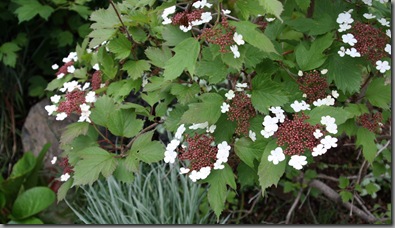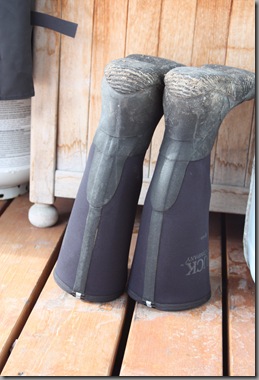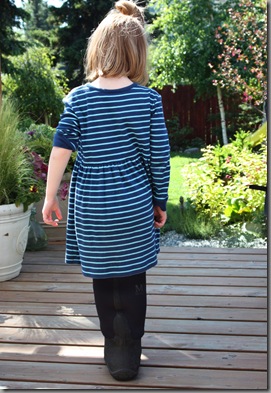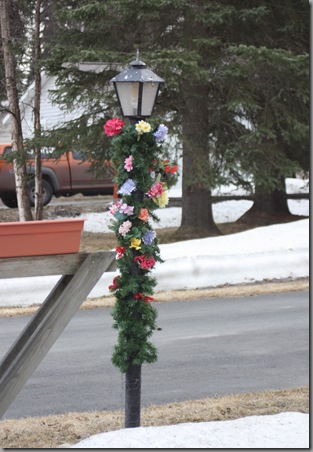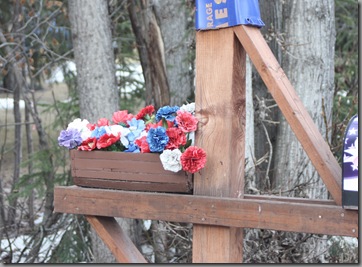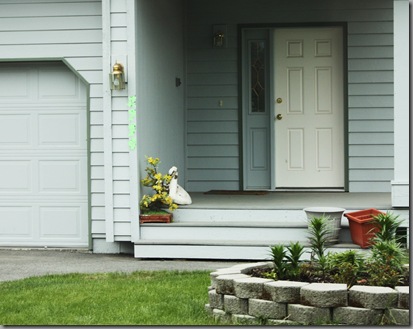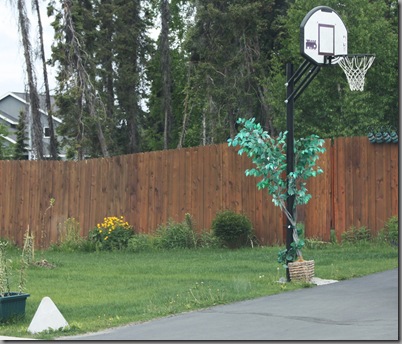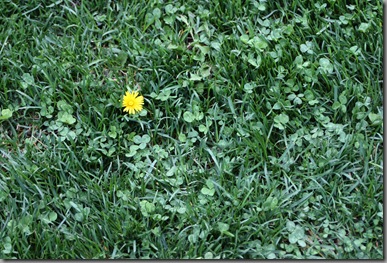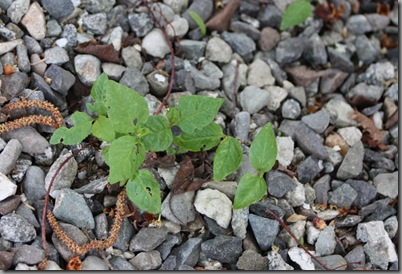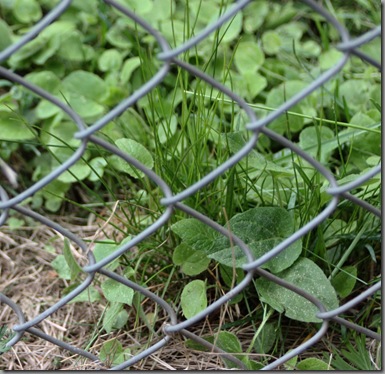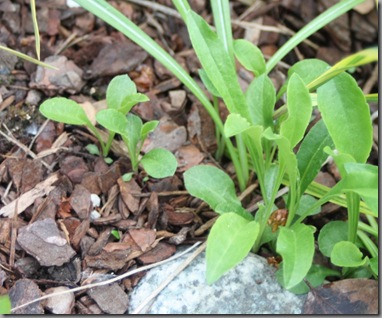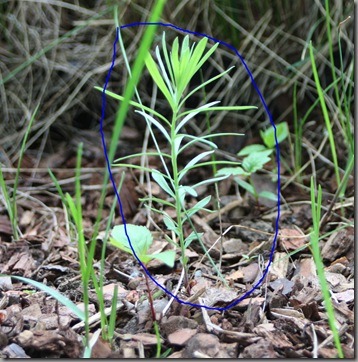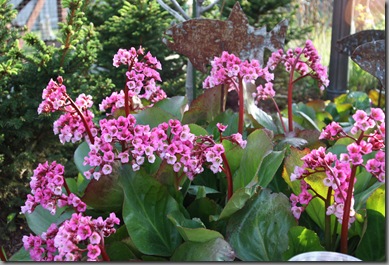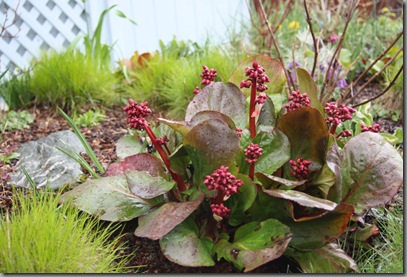I may have mentioned (once or twice a month, and in comments on the garden blogs of others) how Alaska is the pits when it comes to sourcing interesting, unusual, or newly released plants. This is one of those cases when being proved wrong is a pleasant experience. Lorri Abel is the proprietress of In the Garden Nursery, a small specialty nursery tucked away in a south Anchorage neighborhood, a place where the surprises were both pleasant and frequent.
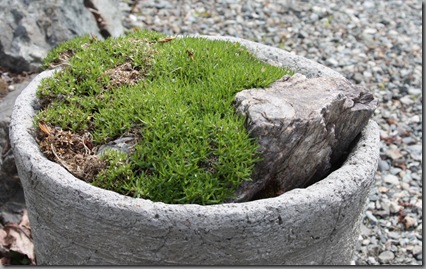
A very savvy businesswoman and member of the Alaska Master Gardener Association, Ms. Abel not only offers hard-to-find plants for her customers, she has also lined up some of Anchorage’s finest for presentations and demonstrations over the course of the summer. (Why don’t more nurseries do this?) Last weekend, Sally Arant gave a class on concrete in the garden and even had some of her fabulous concrete works of art for sale at the end of class. Check out the nursery website for more upcoming classes as they are added. I see I missed hearing from Annie Nevaldine (a pro with extensive knowledge of plants and a Master Gardener) and Jane Baldwin (Primula queen and Anchorage Master Gardener prez). Drat!
Lori was kind enough to let me stop by shortly after opening week in mid-May for some photos. Shall we go in?

One thing I noticed right away (and will be gratifying to the nearsighted among us) was the plethora of easy to read signage. No endless wandering (that tends to get expensive for me) for that vine or groundcover when you can see right away…
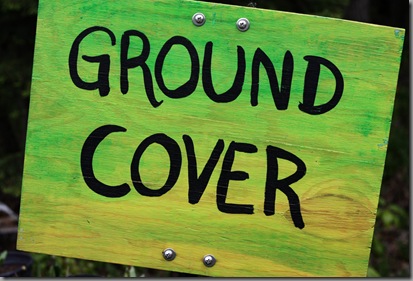

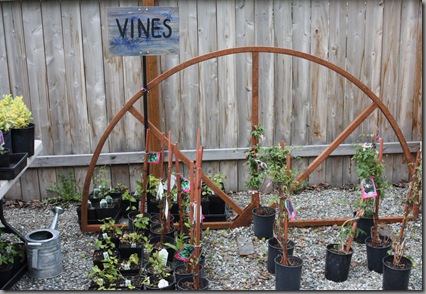
…where to go. I’m very good at snooping around for those new or unusual varieties (my modesty is really shining through here), so imagine my pleasure at discovering Brunnera m. ‘Spring Yellow’, Ligularia ‘Osiris Cafe Noir’, and Dicentra ‘Gold Heart’. And the goodies didn’t stop there.
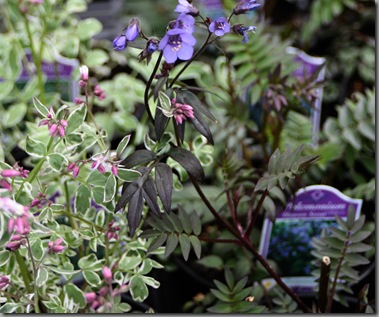
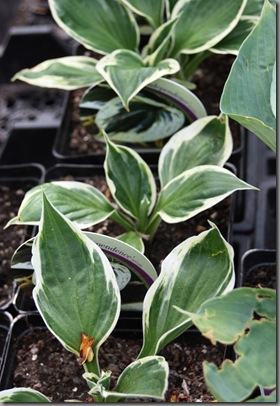
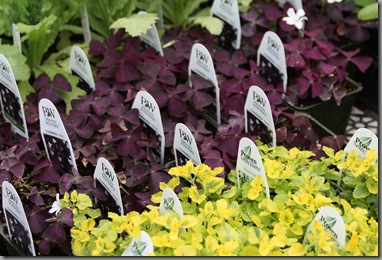
Looking over my list of pleasant surprises, I note many of them are shade plants, or as we in Alaska call them, full sun plants. Yep, we grow Hostas in sun. Crazy, I know, but it just doesn’t get hot here (75F is a scorcher) and our nights (and soils) are cool so we get away with it. Some other uncommon treasures: Hepatica americana, Athyrium ‘Lady in Red’, Epimedium (at least three types that I saw), Aruncus ‘Guinea Fowl’, Uvularia grandiflora, and about three or four different Cimicifugas. Won’t find this list at the ol’ home improvement store. I know, I’ve checked.
And how many nurseries have a sale table? Off the top of my head: none around here. Many just pitch less than stellar specimens or overstock in the trash. I just saw some lush specimens of Isolepis cernua (fiber optic grass) piled up in the trash at a nursery I won’t name. (At that moment, I contemplated dumpster diving for the first time since my college days.) None of that wasteful pitching here…off to the sale table they go.

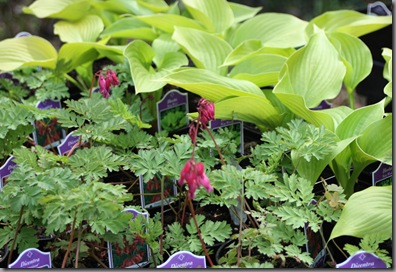
I was thrilled to see a section devoted to ornamental grasses, which don’t get much attention in Alaska. And surprise, surprise, I picked up a grass (Calamagrostis x acutiflora ‘Eldorado’) I didn’t have. Actually, as a side note, I thought I had ‘Eldorado’ and was unimpressed with the supposed “gold” tinge. No wonder. My specimens must have been mislabeled and are very likely ‘Avalanche'. I am happy to report ‘Eldorado’ does indeed have a pronounced gold tinge, for those that are wondering.
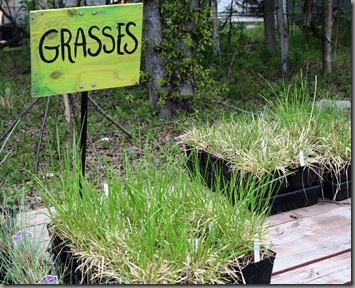
This isn’t exclusively a perennial nursery. There’s a bit of everything. I found cheerful annuals (like the pansies below) just begging for me to take their picture. I notice I’m having a yellow moment here. Noteworthy because I have heretofore forbidden myself to have any more yellow moments. They draw attention to the dreadful yellow play slide in the back yard…oops, I meant back garden: thanks Noelle. The yellow slide will be covered in a future philosophical rant upon the fascinating subject of children's play equipment.
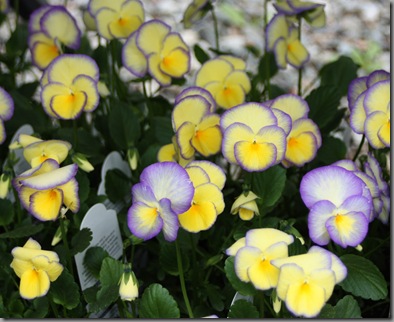
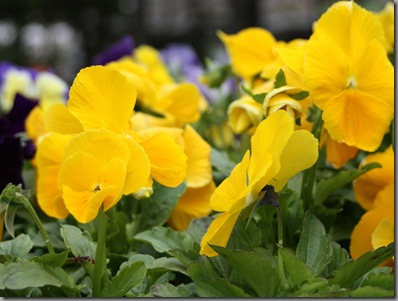
Now, where was I? Oh, yes. There were also trees and shrubs to be had. Don’t the dapper chaps below look nice? I had to be very firm with myself, “No more room for shrubbery, no matter how small.” But aren’t they cute? Sort of like the horticultural equivalent of puppies or kittens, my eye was just drawn to them. The kids have always wanted a pet, but I don’t think this is what they had in mind. Which is too bad because these will never chew shoes, spray furniture, or develop a barking habit.
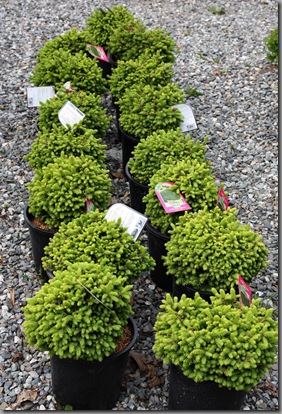
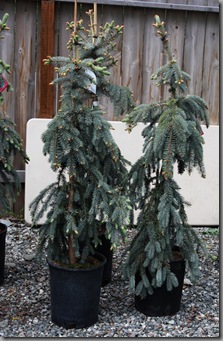
Is the non-gardening spouse or companion in a decline over having to troll the nursery for hours and hours? Or even fifteen minutes? Clever Ms. Abel has developed a place here for them. A very inviting and comfortable looking place, too. I didn’t see any sticks for roasting marshmallows over the fire pit, but then I’d never leave if there was.
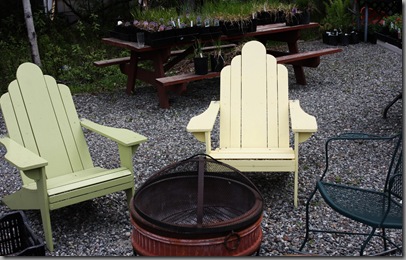
Wow, a whole section (and bona fide sign) for our humble native plants. Again, a new sighting for me at Alaska nurseries. Usually, our native plants are relegated to some dark, unlabelled corner of retail sales, like Harry Potter shut up in the broom cupboard. They are there, but unacknowledged. Not so, here.
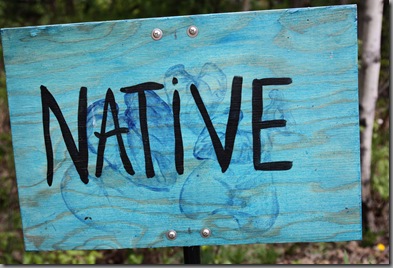
The sly ones amongst the readership are probably wondering how many truckloads of plants were purchased. I stunned even myself and went away with just a flat. Disciplined, that’s me. Of course I won’t promise not to stop by and pick up more bits and pieces for the garden. The selection is too good, and Lorri says she can get wiped out of certain plants after a garden designer stops by and buys the whole lot. You’ve been warned…get over to In the Garden Nursery, pronto.
Do nurseries in your area have seating areas for non-shopping companions? Sections for native plants? Good signage?

